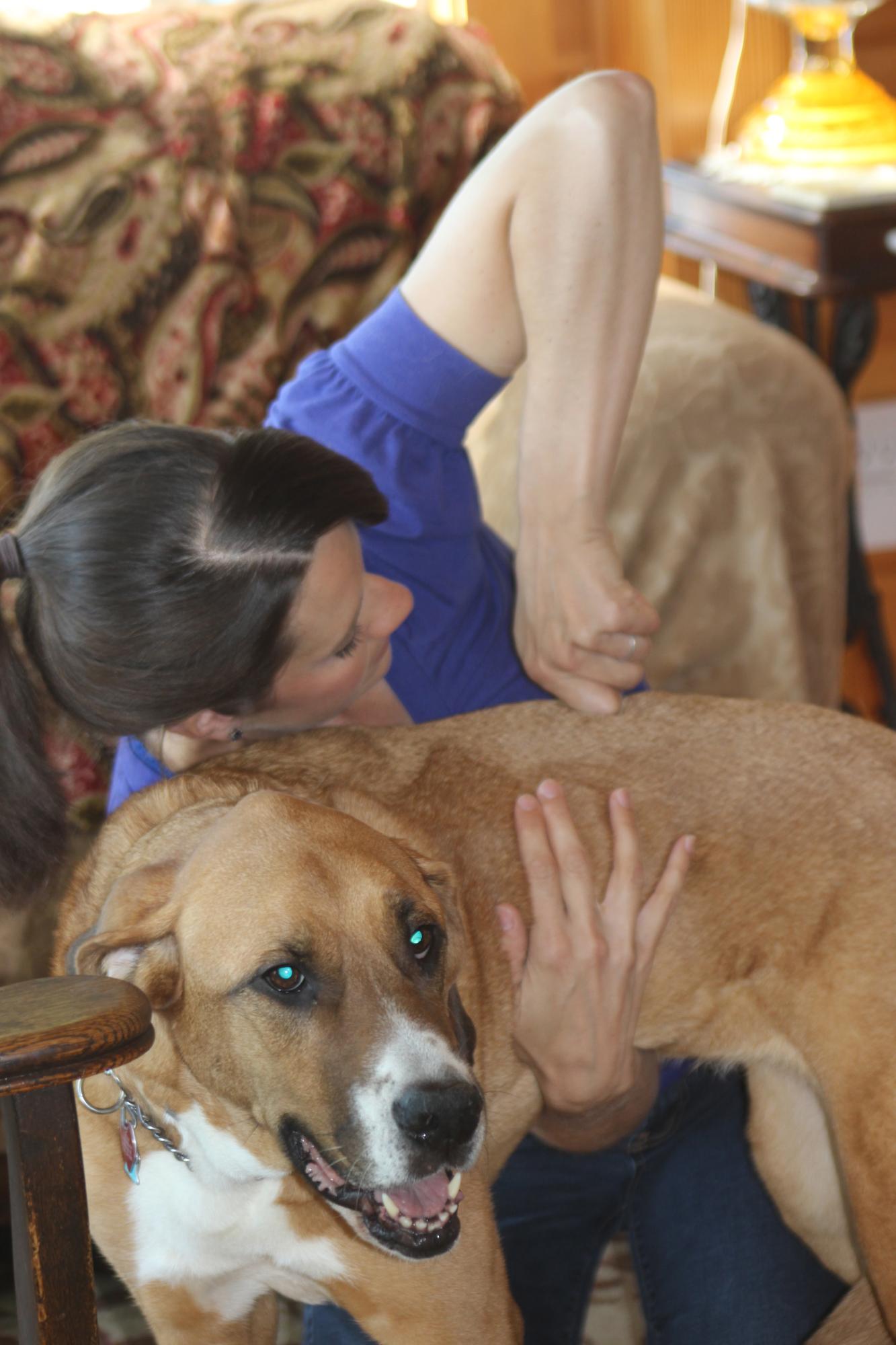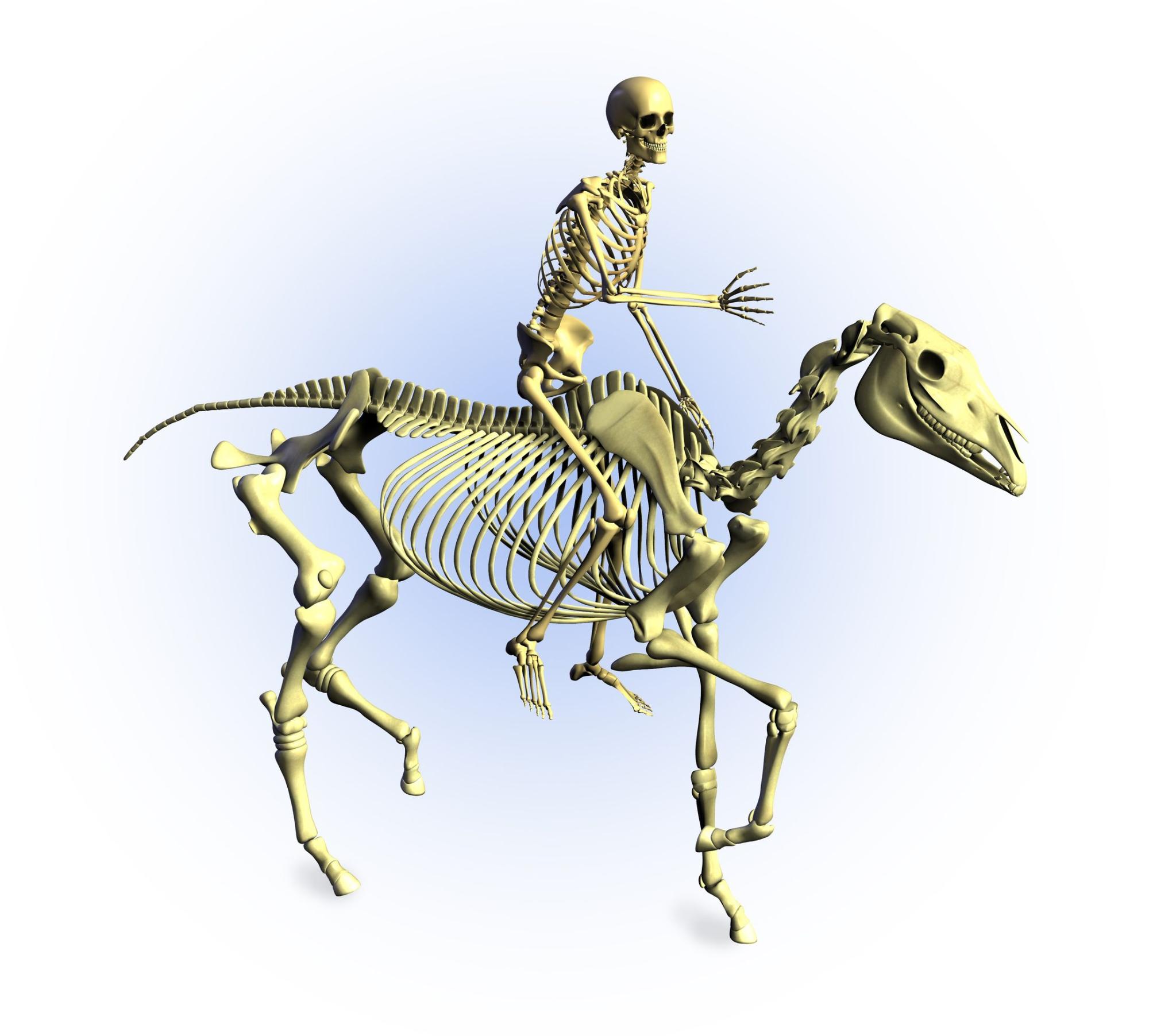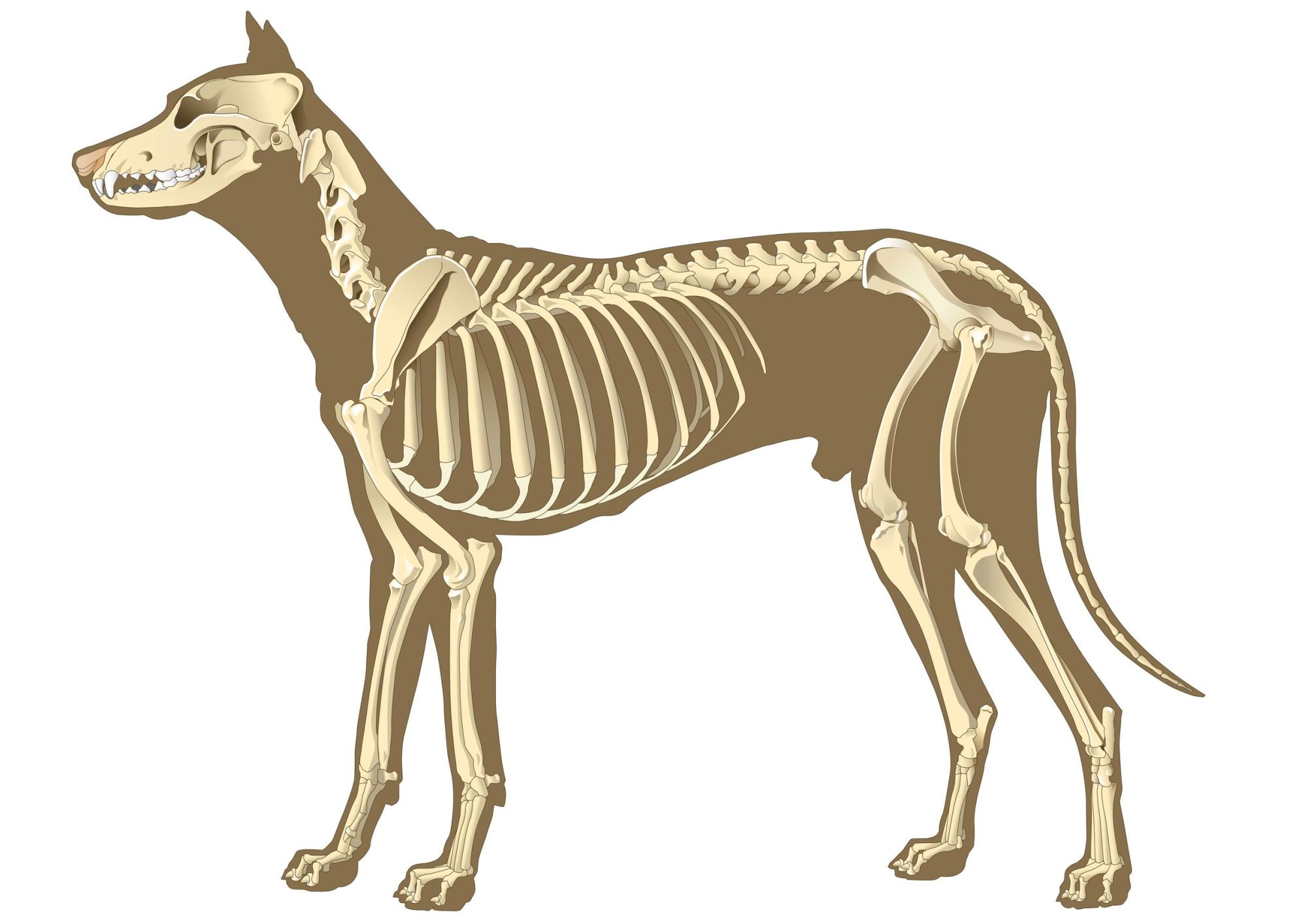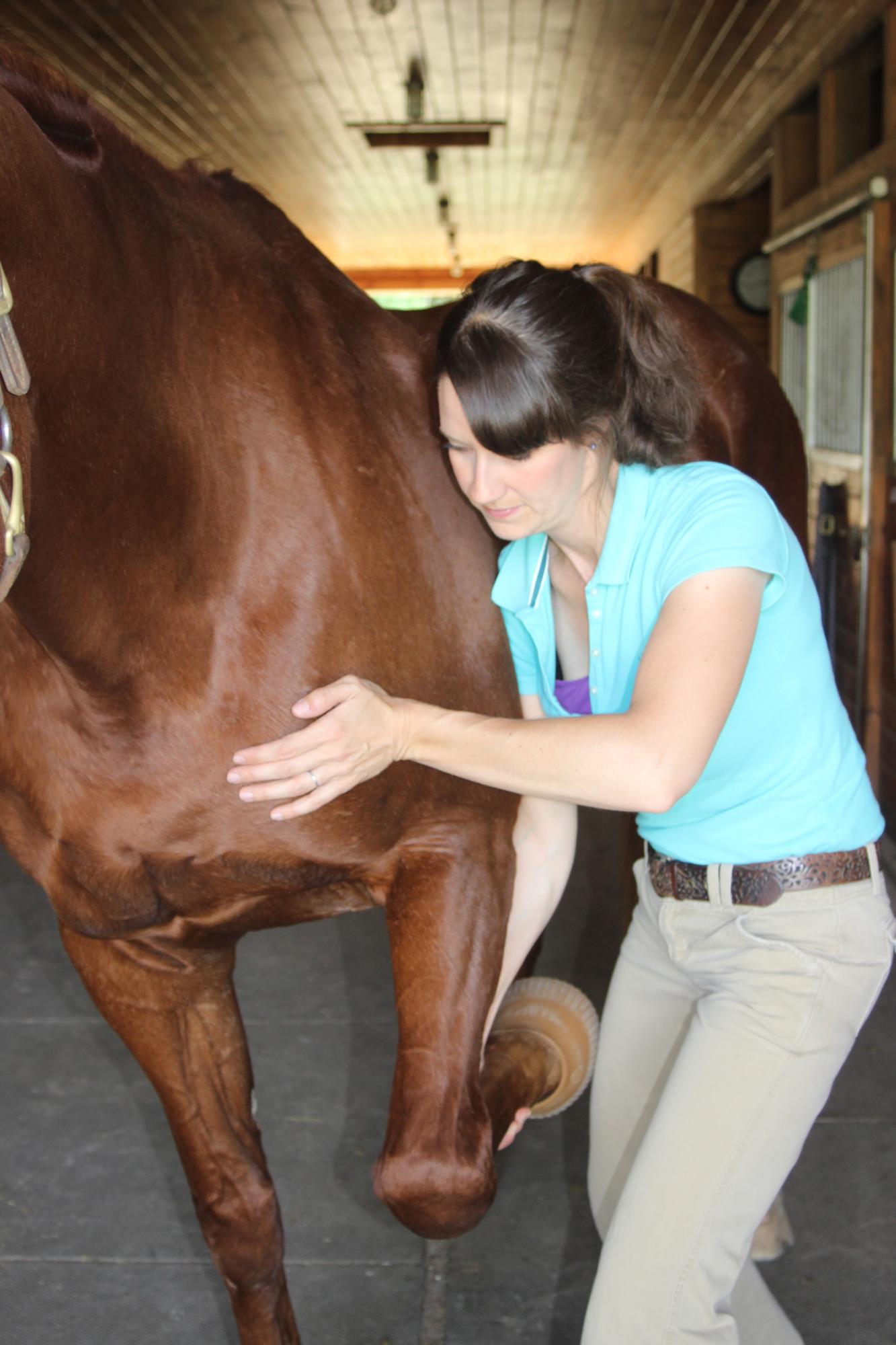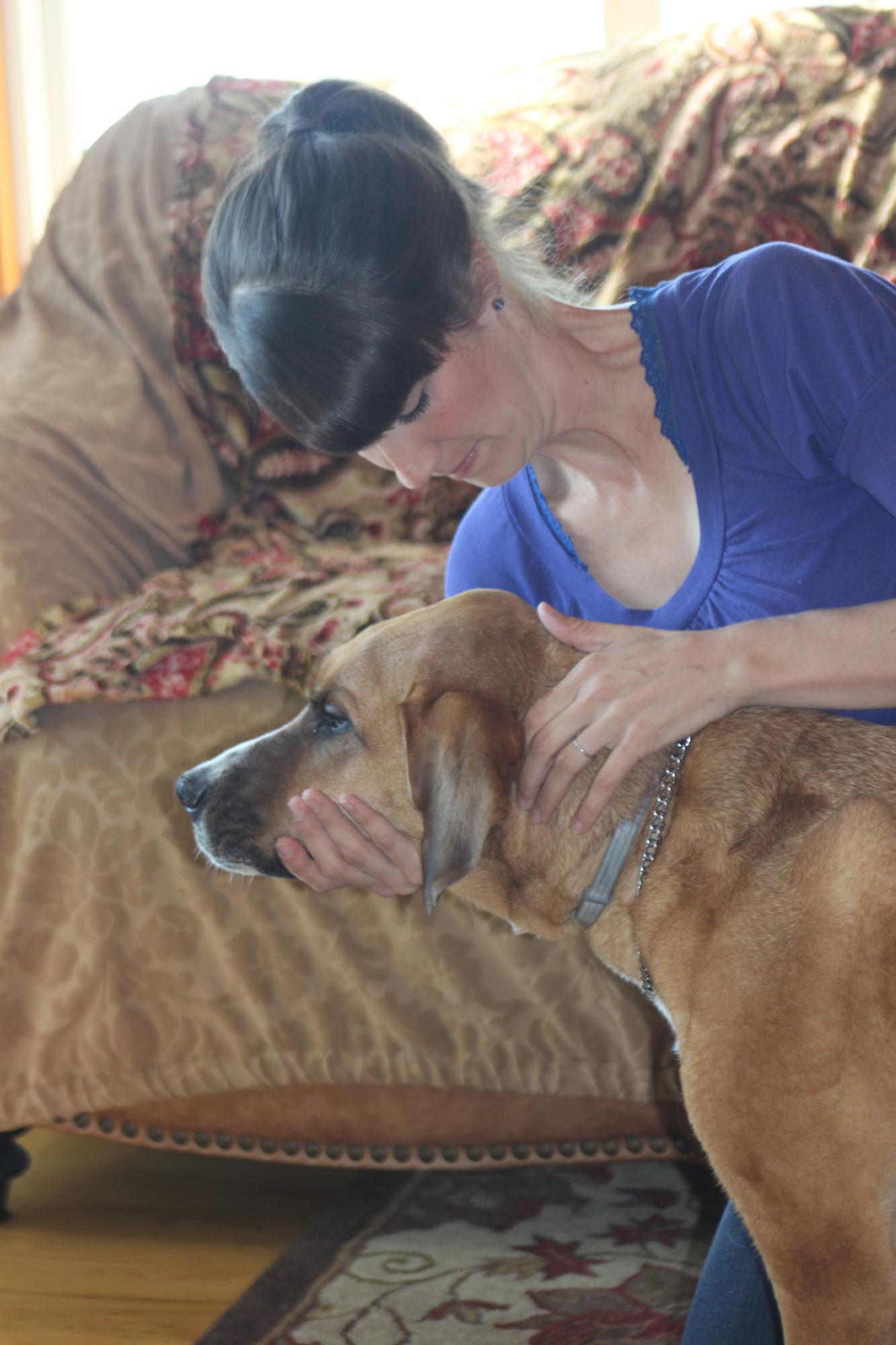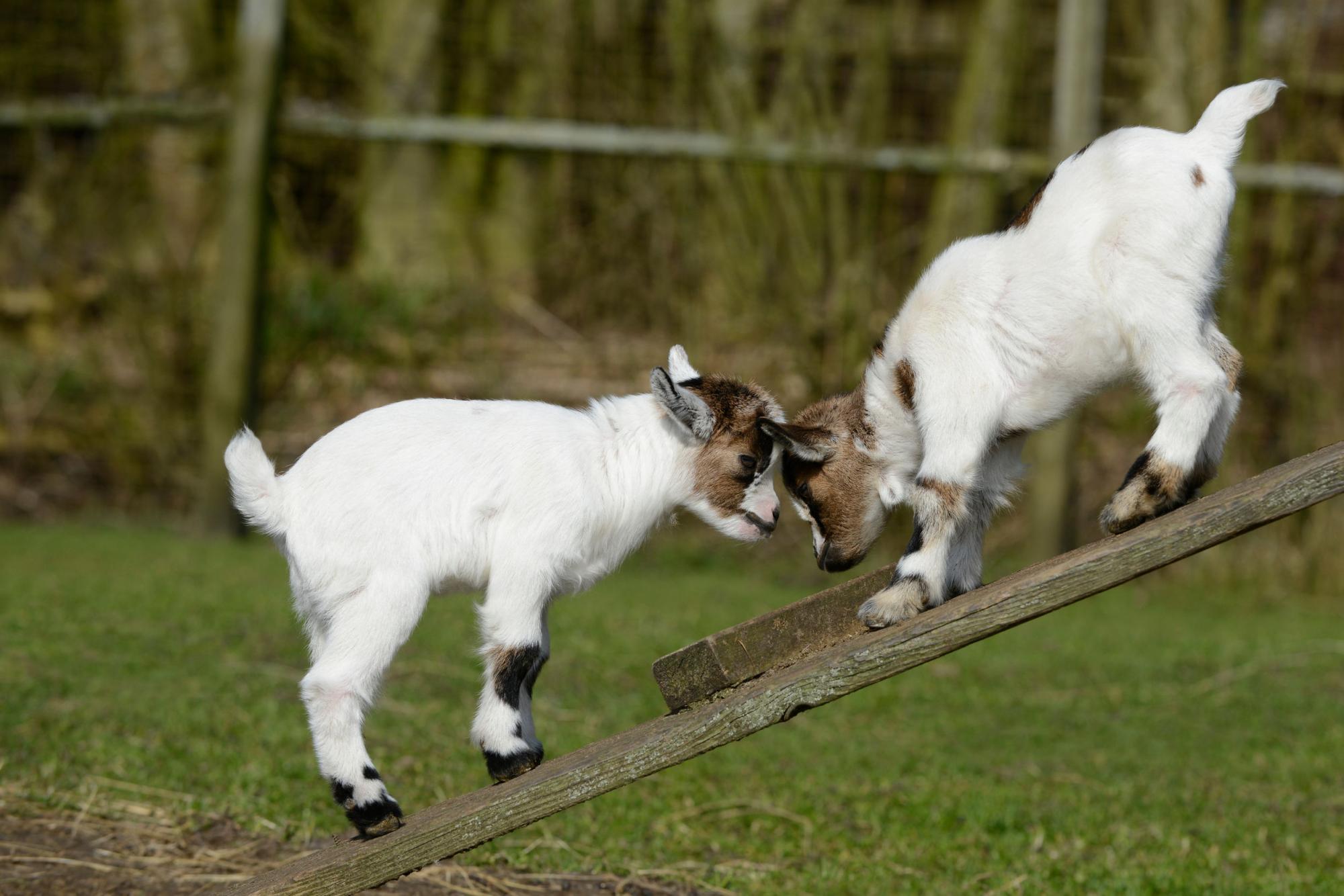CHIROPRACTIC CARE
Goals of Animal Chiropractic
*Allow the animal to function optimally so he/she can be happy and healthy
*Improve performance and help maximize athletic potential
*Help decrease chance of injury
*Help to increase longevity of athletic career as well as over life
*Increase range of motion of joints and decrease soreness
*Help young animals grow in their optimal form and bodies balanced through growth changes
*Palliative care and comfort for the older animal
Frequently Asked Questions:
What is Animal Chiropractic?
Veterinary chiropractic is not meant to replace traditional veterinary care, and actually works best when it is integrated with traditional medicine.
The chiropractic exam involves palpating the animal's joints to feel for any areas of decreased range of motion. Contrary to mainstream thought, we are not looking for bones that are "out of place" as would be indicated by the medical or veterinary terms "subluxation" or "luxation." In fact, chiropractic works exclusively within the normal range of motion of a joint and seeks to locate where bones are restricted in their normal movement. These "stuck" joints or areas are called a chiropractic Vertebral Subluxation Complex (VSC). The chiropractic exam and adjustment locates VSCs, and restores normal range of motion in order for inflammation and pressure on nerves and soft tissue (muscles, tendons, ligaments) to be removed.
The entire body is controlled and maintained by messages that are sent by nerves to the spinal cord and brain. If the messages traveling to the spinal cord and brain are altered in any way, for example from inflammation, then the overall health of the animal is compromised. Chiropractic does not simply focus on a "sore back," but rather ultimately is a modality of wellness care to help keep our animals optimally healthy for as long as possible. One way we do this is by making sure that their nervous system is functioning to the best of its ability. 80% of joint stability comes from muscles and tendons, and as design would have it, many of the nerves that transmit information about a body in its environment are located within muscles. Therefore, if we can keep the nervous system firing at optimum capacity, the animal is going to use its muscles correctly (biomechanics) without putting compensatory strain on other body structures such as ligaments, tendons, and muscles.
While we tend to focus in on bones and joints, because all body systems are connected by the nervous system, one of the amazing things about the chiropractic adjustment is that by freeing fixations this can have profound effects on other body systems such as the immune system, the gastrointestinal system, the reproductive system, the urinary system, etc. We have the potential to help any animal in any stage of life to have the greatest opportunity for optimal health. This is why chiropractic is so effective for conditions ranging from lameness, to poor digestion, to infertility, to incontinence. Beyond the obvious traumas and diseases that certainly require traditional medicine (although chiropractic is an important addition), we ask our domesticated animals to do jobs and live in places that they would not normally in the wild, and this creates different demands on their body that must be considered for them to have longevity of health.
How do I know if my horse needs to be adjusted?
These are some, but not all, common presenting complaints from owners:
-Poor Performance
-Change in attitude
-Refusing or reluctant to do things that they normally would do
-Abnormal posture
-Not engaging properly or cannot carry body "long and low"
-Horse has trouble in a particular direction
-Muscle atrophy / Abnormal development / Uneven topline
-Painful back, withers, legs, or tail
-Difficulty flexing at the poll
-Changes in gait and/or stride length
-Difficulty chewing / TMJ issues
-Not picking up the correct lead, unable to maintain lead, or cross cantering
-Dragging the hind feet
-Post surgical care / Rehabilitation / Stall rest form an injury
-Horse is "not quite right"
-Pain when saddled
-Traveling with a hollow back
-Having a hard time getting up or down
-Uneven pelvis or hips
-Post birthing care for mare and foal
How do I know if my dog or cat needs to be adjusted?
These are some, but not all, common presenting complaints from owners:
-Neck or back pain
-Abnormal posture
-Lick granulomas
-Urinary or fecal incontinence
-Recurrent ear or anal gland infections
-Changes in performance
-Post surgical care / Rehabilitation
-Change in behavior or attitude
-Recurrent digestive problems
-Altered sitting positions
-Discomfort in a collar or harness
-Post birthing care for mother and baby
What can I expect at our appointment?
Dr. Lindquist will first ask some questions about the history of your animal, which could include medical information and questions about your animal's lifestyle. It is important to give as much information as possible as there may be something in your animal's history that will guide his/her specific chiropractic program. The exam itself will consist of feeling your animal's joints and correcting any fixations with an adjustment. The chiropractic adjustment is a very specific, very quick, but gentle thrust into the joint within its normal range of motion. Each joint in the body has a specific angle through which it moves, so for larger animals such as horses, Dr. Lindquist will stand on foam blocks that are the same shape as a hay bale in order to be able to achieve the correct positions.
Most animals really enjoy being adjusted, and are relaxed and content during the exam. They quickly realize that you are helping them, and many animals show visible happiness when they realize they are going to be adjusted. Occasionally a specific adjustment may be a little uncomfortable for an animal, particularly if they have a lot of secondary compensations in their body for an area that is giving them trouble. In these cases, the exam is often modified and we work with what the animal is telling us. Chiropractic is very safe when performed by properly trained and licensed individuals that have had advanced training beyond their doctorate degree.
What happens after the exam?
Most animals feel an immediate improvement after their adjustment. Some animals express this by being playful, and some animals act quiet and sleepy for the rest of the day. Rarely, an animal can experience increased soreness initially, but are generally more comfortable than before their adjustment within 24 hours. For horses or performance small animals, it is best to give 1-2 days off from athletic activity, but normal turnout/leash walks are recommended during that time. Stall or kennel rest would be contraindicated.
Can my animal be adjusted if he/she is sick or injured?
Each case is very specific and it depends on the particular illness or injury, but in most cases chiropractic is a wonderful integrative treatment to debhilitated animals (i.e. stall rest, kennel rest, hospitalized). A program would be determined on a case-by-case basis, and would often involve not adjusting the injured area, but making sure that the rest of the body is balanced so that it can heal optimally and with decreased secondary compensations that could cause further problems after the initial injury has healed.
How often does my animal need to be adjusted?
If it is an animal's initial visit, it is common to have 2-3 appointments fairly close together in order to get an understanding of how the individual animal responds to treatment. Acute problems, or ones that have happened very recently, often respond to treatment rapidly while chronic, or ongoing, problems need a more extensive treatment plan. Each animal will have their own schedule developed for their specific needs, lifestyle, and response to treatment.

